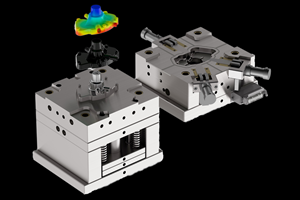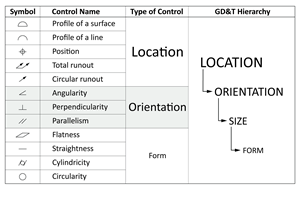A Manufacturing Software Purchase - Not a Matter of Biting the Bullet
Moldmaking shops sell leadtimes and capacity. Bottleneck management and maximizing throughput are the essence of their daily operations management. A manufacturing and scheduling software package can help.
No wonder small- and mid-sized manufacturers grit their teeth when they buy software. Their budgets are smaller and stakes are higher than at larger companies. Every useless piece of stock, inaccurate quote or unnecessary breakdown and setup hits the bottom line. Maybe they need a manufacturing and scheduling software package, but it still hurts to pay for one. However, the right software used well will pay for itself quickly through higher throughput.
The right solution offers the freedom to manufacture not administrate, and more production from the same resources - what we in the industry used to call "efficiency," "maximum capacity" and "productivity," but the desired result has always been higher throughput.
Moldmaking shops sell leadtimes and capacity, as much as they sell product. Therefore, bottleneck management and maximizing throughput are the essence of their daily operations management, and manufacturing software can help them do that.
Throughput is a nontraditional measure of productivity defined by Eliyahu M. Goldratt in his landmark book, The Goal. It is a measure based on two simple principles:
1. Throughput is not theoretical; it is defined as revenue less materials and outside services. The throughput value of something you make, if you have no order from a customer for it, is zero. In fact, it is a liability; you have spent money to produce it. The throughput value of something you have sold is defined as its price less the cost of materials and outside services that went into making it. Profit is throughput less operating expense.
2. When throughput increases and operating expenses are unchanged, all of the throughput increase becomes profit. Consider the following example from a theoretical company:
If sales equals $5,000,000 and material and outside services equals $1,500,000 (30 percent of sales), throughput equals ($5,000,000 - $1,500,000) $3,500,000.
Labor and Overhead are $3,000,000
Throughput - Labor and Overhead = Gross Profit
$3,500,000 - $3,000,000 = 500,000 or 10 percent
Now increase sales by just five percent or $250,000 without increasing operating expenses:
Sales equals $5,250,000 and material and outside services equals $1,575,000 (30 percent of sales), while labor and overhead remain the same at $3,000,000.
Throughput = ($5,250,000 - $1,575,000) = $3,675,000
Throughput - Labor and Overhead = Gross Profit
$3,675,000 - $3,000,000 = $675,000 or 13 percent
Profit overall has increased by $175,000 or 35 percent - which more than pays for a good manufacturing software solution.
Increase Throughput Without Increasing Labor and Overhead?
Increasing throughput without increasing labor and overhead is possible by making better use of the capacity you already have. A recent study of American manufacturers showed that most resources are never more than 50 percent utilized.
That is outrageous, and for a small manufacturer, potentially fatal to the business. This gross under-utilization of resources is due to poor planning of resources and/or material. By the aforementioned model, a 10 percent increase in throughput would raise utilization from 50 to 55 percent. How many tens or hundreds of thousands of dollars in capacity would that mean in your shop? And would that pay for the software investment?
To increase that throughput, a system must enable management to manage proactively. Here are two examples:
1) A system that allows more aggressive quoting on jobs that don't require time in a bottlenecked resource, so that except for material and outside service costs, the balance of the revenue goes right to the bottom line.
2) A system that alerts management on an exception basis - such as alerting production supervisors of a projected cost overrun, while a job is still in process. This can salvage the profitability of a job. Without such a system, the discovery may not be made until the job ships at a loss.
The ROI of Information
The right software puts your entire company on a single database that everyone uses, from the sales force through to accounting, the shop floor, shipping and top management. Cost savings result through reduced rework and waste associated with not having current information. How much does a single line setup or breakdown cost in lost production? How many of those do you do a year to rework a job because of outdated information? On a single database, engineering changes are immediate.
The ROI of Streamlining Workflow
As small- and medium-sized manufacturers know better than anyone else, labor hours are not "funny money." Systemized workflow procedures mean more throughput from the same number of employees in the same number of work hours, and faster learning curves for new employees.
Some examples of what good manufacturing software offers include:
- Automatically creating Job Travellers complete with work instructions upon receipt of a customer order.
- Automatically consolidating material requirements which allows one to take advantage of quantity price breaks from suppliers.
- Simplified work consolidation for open work orders in the form of Cut Lists and Pick Lists (Work Reduction).
- Bottleneck identification tools that allow 10 to 15 percent more throughput in a shop with no additional labor or overhead.
- Configurations which reduce the number of people needed to complete a job or put them to work more efficiently.
ROI Is "Hands-On"
A scheduling and manufacturing software package should be used as a tool - daily and actively. Users should conduct a short throughput meeting no more than 15 minutes at the beginning of each day. The purpose of the meeting is to discuss the current state of the bottlenecks, and the schedule as it exists and then to take action to increase profitability.
The challenge is to get the most out of your plant today - and in most businesses, that constraint changes daily, be it from a production line down for repair, a material shipment that's late or a key operator calling in sick. And as any plant manager will tell you, bottlenecks do not remain stationary. As you gain efficiency in one area, a new bottleneck emerges elsewhere, and so the process must be ongoing.
That daily throughput meeting must be less a coffee break and more of a strategy session - or if you like, a scrimmage. A daily throughput meeting is the means of maximizing the amount of goods a manufacturer ships to its customer in the least amount of time.
Manufacturing and scheduling software is by no means a necessary evil. Used well, it minimizes administration and maximizes throughput from your profit centers.
For more information, contact Dann Maurno, international marketing manager for Lilly Software Associates at (603) 926-9696 or via e-mail at:dmaurno@lillysoftware.com.
Related Content
Tips for Tackling Mold Design, Machining, Cutting Tool and Wear Challenges
Tips for tasks ranging from reducing risk in part design and taking advantage of five-axis machining to refining cutting tool performance and reducing wear with guiding and centering systems.
Read MoreHow to Select a Mold Temperature Controller
White paper shares how cooling channel analysis, which collects maximum pressure drop, total flow rate and heat dissipation, eases the performance evaluation of mold temperature controllers.
Read MoreTolerancing in Mold Design, Part 2: Using GD&T to Address Conventional Tolerancing Issues
Mold designers can achieve a single interpretation of workpiece functionality when following the American Society of Mechanical Engineers Geometric Dimensioning and Tolerancing standard.
Read MoreThe In's and Out's of Ballbar Calibration
This machine tool diagnostic device allows the detection of errors noticeable only while machine tools are in motion.
Read MoreRead Next
Reasons to Use Fiber Lasers for Mold Cleaning
Fiber lasers offer a simplicity, speed, control and portability, minimizing mold cleaning risks.
Read MoreAre You a Moldmaker Considering 3D Printing? Consider the 3D Printing Workshop at NPE2024
Presentations will cover 3D printing for mold tooling, material innovation, product development, bridge production and full-scale, high-volume additive manufacturing.
Read MoreHow to Use Strategic Planning Tools, Data to Manage the Human Side of Business
Q&A with Marion Wells, MMT EAB member and founder of Human Asset Management.
Read More









_300x250 1.png;maxWidth=300;quality=90)









.png;maxWidth=300;quality=90)









